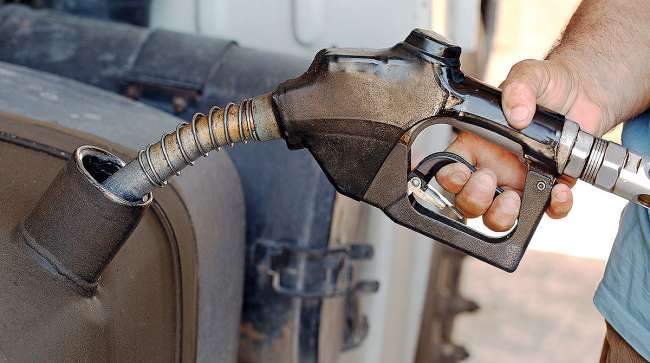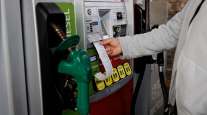Senior Reporter
Average Price of Diesel Rises 1¢ to $3.08 a Gallon

The U.S. retail diesel average rose 1 cent to $3.08 a gallon, the Department of Energy reported, as the price of crude oil slipped just below $59 per barrel amid concern over a possible slowdown in the U.S. economy.
The average price was 7 cents higher than it was a year earlier, when diesel was $3.01 a gallon.
U.S. average #diesel fuel price on 3/25/2019 was $3.080/gal, UP 1.0¢/gallon from 3/18/19, UP 7.0¢/gallon from year ago https://t.co/yHfmVPSqZU #truckers #shippers #fuelprices pic.twitter.com/VpYEvgx51G — EIA (@EIAgov) March 26, 2019
Diesel prices climbed in all regions except in the Central Atlantic where it fell by three-tenths of a cent to $3.310, DOE said after its March 25 survey of fueling stations.
Also last week, the national average price for regular gasoline climbed 7.5 cents to $2.623 a gallon, DOE’s Energy Information Administration said.
Gas prices jumped in all regions, but the average remained 2.5 cents cheaper than a year ago, EIA said.
At the same time, Southern California Gas Co. announced it will lower the price of compressed natural gas at all of its 13 public-access natural gas vehicle fueling stations by 26 cents per gallon beginning April 1.
“Lowering the cost of this clean fuel increases the benefits for trucking fleets and others that have switched from gasoline or diesel to natural gas,” Yuri Freedman, senior director of business development at SoCalGas, said in a release.
Natural gas costs significantly less than gasoline or diesel per GGE [gasoline gallon equivalent]. The average pump price at utility CNG stations was $2.37 per gallon in February, whereas the average cost of gasoline in California was $3.24 per gallon, and the average cost of diesel was $3.73 per gallon, the Los Angles-based utility reported, citing EIA data.
U.S. average price for regular-grade #gasoline on 3/25/2019 was $2.623/gal, UP 7.5¢/gallon from 3/18/19, DOWN 2.5¢/gallon from year ago https://t.co/OIQJ8aLfK6 #gasprices pic.twitter.com/Blhr3fu3Y7 — EIA (@EIAgov) March 26, 2019
The utility is able to offer a reduced pump price by returning revenue to customers that is generated from the sale of Low Carbon Fuel Standard credits.
Meanwhile, one commercial vehicle supplier executive said in-engine technology is under development that can further reduce smog-forming nitrogen oxide emissions while also improving fuel efficiency in diesel engines — as California moves to be the first to toughen the current NOx standard.
“We are at the advanced product-development phase,” Robb Janak, director of new technology at Jacobs Vehicle Systems, told Transport Topics.
The company manufactures the “Jake Brake” diesel engine retarder that uses the engine to aid in slowing and controlling the vehicle.
The Bloomfield, Conn.-based company is working on both variable value actuation and cylinder deactivation for upcoming engines. “An in-engine solution gets rid of a lot of [emissions reduction] complexity, makes the engine more efficient, and makes the rest of the selective catalytic reduction system and diesel particulate filters work better,” Janak said.
To get to market, the exhaust thermal management technology will have to be adopted by the engine makers, he said. “They have to choose what technology combination they want. We have several that we offer and are demonstrating now.”
Crude oil futures on the New York Mercantile Exchange closed March 25 at $58.82, down from $59.09 on March 18.
U.S. crude has retreated after reaching $59.98 a barrel on March 21.
As U.S. #crudeoil production has increased, U.S. total and #GulfCoast region crude oil imports have decreased. In the mid-2000s, the Gulf Coast accounted for nearly two-thirds of total U.S oil imports. https://t.co/YedJVUrnVg #EnergyTrade pic.twitter.com/nCK1hpHD9k — EIA (@EIAgov) March 25, 2019
Disappointing economic data and continued uncertainty over the U.S.-China trade war have dampened sentiment. That has offset continued signs that the producer coalition led by the Organization of Petroleum Exporting Countries is committed to curbing output, according to Bloomberg News.
Despite the economic warning signs, the threats to oil consumption seem “overpriced,” Phil Flynn, a senior market analyst at Price Futures Group Inc. in Chicago, told Bloomberg March 25.
U.S. unemployment remains low, gasoline demand has been robust and crude supplies look to get tighter in the coming months thanks to cuts by OPEC and its partners, he said.
“There’s no real sign if you look at the real economy of a recession happening anytime soon,” Flynn said. “Does the oil market care about that today? Probably not. But they are going to start to care about that in a few weeks when they start to see the inventories drawing down.”
While global crude supplies are thinning, “we’re more sensitive to when the next recession is coming, given that the last one was so painful,” said Cailin Birch, a global economist at the Economist Intelligence Unit in London, who spoke with Bloomberg. “It’s a sufficiently scary warning sign that it’ll continue to hang over the market.”
EIA reported U.S. commercial crude oil inventories increased by 2.8 million barrels for the week ending March 22 compared with the previous week. At 442.3 million barrels, U.S. crude oil inventories are about 2% below the five-year average for this time of year.
Some viewed the rise as an indication of weakening global demand.




